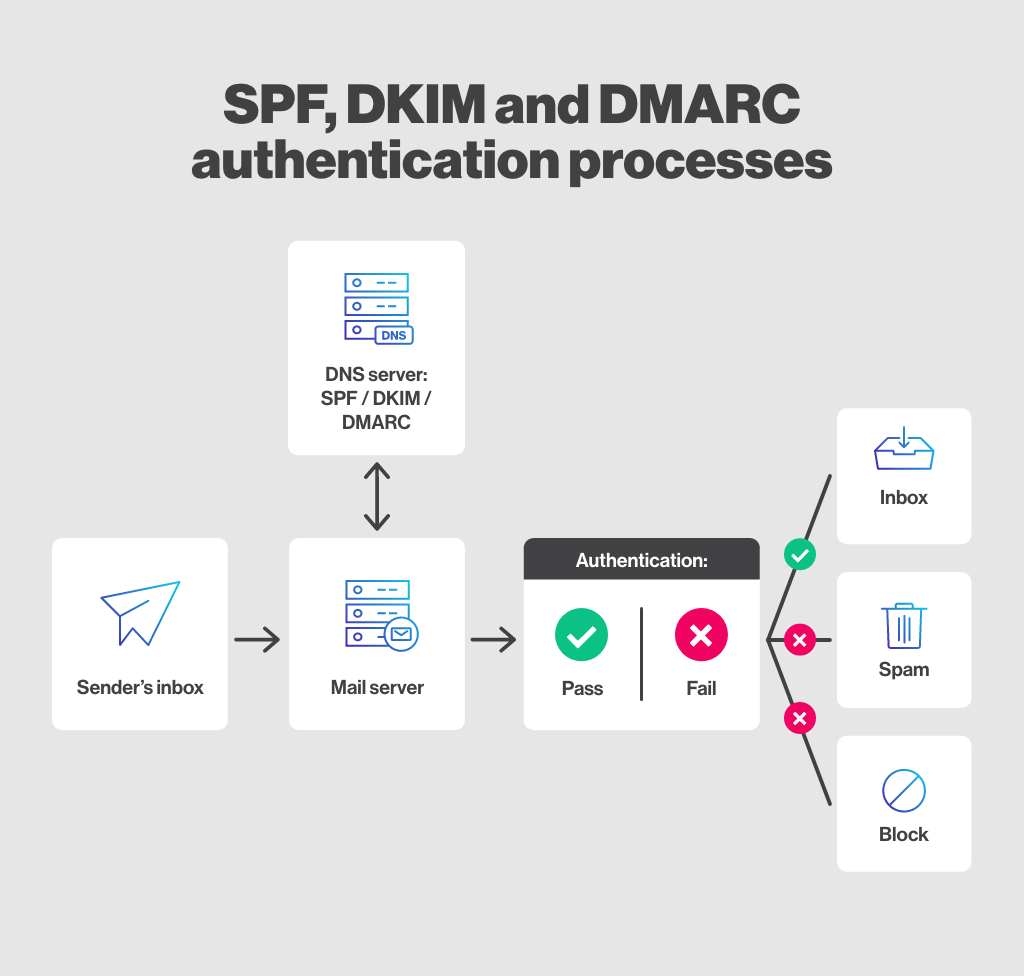
Understanding SPF and DKIM Records: Enhancing Your Email Security
In the ever-evolving landscape of email security, SPF (Sender Policy Framework) and DKIM (DomainKeys Identified Mail) records stand out as vital tools in protecting your domain from email fraud and ensuring the integrity of your messages. But what exactly are SPF and DKIM records, and how do they work? Let’s break it down.
What is SPF (Sender Policy Framework)?
SPF is an email authentication protocol designed to prevent spammers from sending messages with forged sender addresses at your domain. It works by specifying which mail servers are authorized to send email on behalf of your domain. Here’s a closer look:
How SPF Works
- Publishing SPF Records: You publish an SPF record in your domain’s DNS settings. This record lists the IP addresses and domains authorized to send emails for your domain.
- Email Sending Process: When an email is sent from your domain, the recipient’s email server checks the SPF record to verify that the email comes from an authorized server.
- Validation: If the email comes from an authorized IP address listed in the SPF record, it passes the SPF check. If not, the email may be marked as suspicious or rejected.
Example SPF Record
An SPF record might look like this in your DNS settings:
v=spf1 ip4:192.0.2.0/24 include:_spf.example.com -all
In this example:
v=spf1specifies the SPF version.ip4:192.0.2.0/24indicates an authorized IP range.include:_spf.example.comallows mail servers listed in another domain’s SPF record.-allmeans that emails from non-authorized servers should be rejected.
What is DKIM (DomainKeys Identified Mail)?
DKIM is another email authentication method that adds a digital signature to your email headers, verifying that the email content has not been altered during transit. It provides a way for recipients to check that an email was indeed sent by the owner of the domain it claims to come from.
How DKIM Works
- Generating DKIM Keys: You generate a pair of cryptographic keys: a private key (kept secret) and a public key (published in your DNS settings).
- Signing Emails: When your mail server sends an email, it uses the private key to create a digital signature and adds this signature to the email’s headers.
- Verifying Signatures: The recipient’s email server retrieves the public key from your DNS settings and uses it to verify the email’s signature. If the signature matches, it confirms the email’s integrity and authenticity.
Example DKIM Record
A DKIM record might look like this in your DNS settings:
default._domainkey.example.com IN TXT "v=DKIM1; k=rsa; p=MIIBIjANBgkqhkiG9w0BAQEFAAOCAQ8AMIIBCgKCAQ..."
In this example:
default._domainkey.example.comis the selector used to locate the DKIM record.v=DKIM1specifies the DKIM version.k=rsaindicates the key type.p=MIIBIjANBgkqhkiG9w0BAQEFAAOCAQ8AMIIBCgKCAQ...is the public key.
Why SPF and DKIM Matter
- Preventing Spoofing: SPF and DKIM help prevent email spoofing, where attackers send emails pretending to be from your domain.
- Enhancing Deliverability: Emails authenticated with SPF and DKIM are less likely to be flagged as spam by recipients’ email servers, improving your deliverability rates.
- Building Trust: Authentication helps build trust with your recipients by ensuring that your emails are genuine and haven’t been tampered with.
- Protecting Your Domain: Implementing SPF and DKIM helps protect your domain’s reputation and prevents unauthorized use.
Implementing SPF and DKIM Records
- Access DNS Settings: Log in to your domain registrar or DNS hosting provider.
- Add SPF Record: Create a TXT record for SPF with the appropriate settings.
- Set Up DKIM: Generate DKIM keys, add the public key to your DNS settings as a TXT record, and configure your mail server to sign outgoing emails.
- Test and Monitor: Use tools like MXToolbox or Google’s CheckMX to test your SPF and DKIM records and monitor their effectiveness.
Conclusion
SPF and DKIM records are essential components of modern email security. By implementing these records, you can protect your domain from email fraud, enhance your email deliverability, and build trust with your recipients. Regularly check and update your SPF and DKIM settings to maintain robust email security.